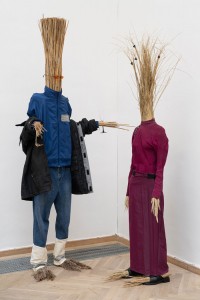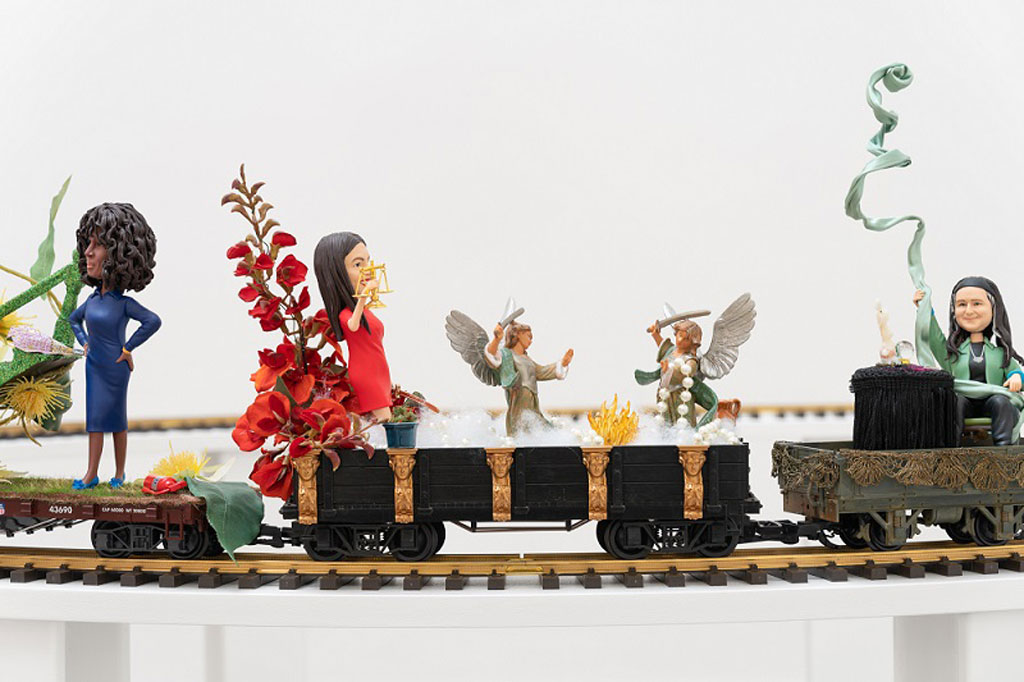ART CITIES:Copenhagen-Witch Hunt
 By the Early Middle Ages in Europe, pagan civilizations had developed various ideologies regarding the way the world functioned through the idea of magic as a substitute for that which they had yet no way of explaining through science: weather phenomena, birth, death, etc. In Nordic Europe, a wealth of mythology develops by means of polytheistic religion, a mythology that fosters this magical view of thinking, with examples of supernatural power and magical creatures referenced in the earliest texts of the civilization.
By the Early Middle Ages in Europe, pagan civilizations had developed various ideologies regarding the way the world functioned through the idea of magic as a substitute for that which they had yet no way of explaining through science: weather phenomena, birth, death, etc. In Nordic Europe, a wealth of mythology develops by means of polytheistic religion, a mythology that fosters this magical view of thinking, with examples of supernatural power and magical creatures referenced in the earliest texts of the civilization.
By Dimitris Lempesis
Photo: Kunsthal Charlottenborg Archive

Turning to Nordic mythology, the role of an evil woman is frequently present; beings such as Valkyries and mara (female succubus-like creatures) are frequently depicted as predators of men, thus fulfilling the same “evil woman” role that the witch will do later. A subcategory of this archetype is the “troublesome old woman which reflects in the stereotypical connotation of a witch as an old hag. It is therefore not shocking that in most trials in both the Nordic regions and in the rest of Europe, women over 50 years were most frequently targeted and accused. A point that should be stressed is that not only women were accused of witchcraft. In fact, The Nordic countries would end up having one of the highest rates of men accused, resulting in a distinguishing difference from the witch trials in other parts of Europe. In the 17th century, hundreds of witch trials took place across the five Nordic countries of Iceland, Norway, Denmark, Sweden, and Finland, resulting in scores of deaths and casting a pall over the region. While the trials in Salem have been widely documented and recreated in popular culture for generations, the incidents of indigenous violence in the Nordic countries have been largely left out of the narrative. The exhibition “Witch Hunt” at Kunsthal Charlottenborg includes both original materials from the 15th-18th Century and newly commissioned artworks. Through the lens of contemporary art, the exhibition examines the under-explored regional history of the Nordic witch hunt, and the particularities of indigenous violence and gendered persecution. Among the artists are names like: Pia Arke, La Vaughn Belle, Louise Bourgeois, Carol Rama and Carmen Winant. The exhibition presents seven new commissions from internationally-renowned artists who, through research and dialogues with leading scholars, dive into the social, gendered, and geopolitical layers of the witchcraft trials. Along with existent artworks and original archival material from the period, the exhibition investigates how specific threads of the Nordic witch hunts, particularly relating to identity, cartography, climate, and systems of power, reverberate today. From the impact of Danish colonialism to the multifaceted violences of misogyny, the exhibition proposes a present haunted by persecutions of the past – but one that is also occupied by new critical voices of opposition. The participating artists explore discriminatory fear and hatred as it spreads from both the bottom up and the top down, between neighbors onto larger communities and from governments to other political institutions, questioning how such narratives are often written out of history. At a time of global unrest, as the politics of commemoration are in question, “Witch Hunt” suggests the need to revisit seemingly distant histories and proposes new imaginaries for remembering and representation.
Participating Artists: Pia Arke, La Vaughn Belle, Anna Betbeze, Louise Bourgeois, Youmna Chlala, Keviselie (Hans Ragnar Mathisen), Sidsel Meineche Hansen and Reba Maybury, Virginia Lee Montgomery, Sandra Mujinga, Rasmus Myrup, New Noveta, Carol Rama, Máret Ánne Sara, Aviva Silverman, Angela Su, Carmen Winant, Cecilia Vicuña
Info: Curators: Alison Karasyk and Jeppe Ugelvig, Kunsthal Charlottenborg, Kongens Nytorv 1, København, Duration: 7/11/2020-21/1/2021, Days & Hours: Tue-Fri 12:00-20:00, Sat-Sun 11:00-17:00, https://kunsthalcharlottenborg.dk





Right: Carmen Winant, The neighbor, the friend, the lover, 2020. Found double-sided images on paper. Courtesy the artist and Stene Projects, Stockholm


